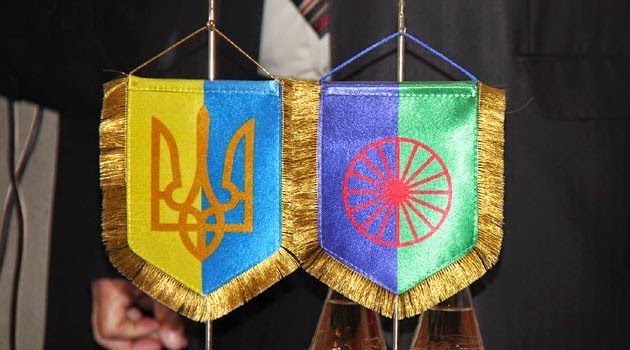By Paul Goble
Kyiv naturally has focused its attention on Moscow’s exploitation of ethnic Russians in Crimea and Donbas (eastern Ukrainian region encompassing Luhansk and Donetsk provinces) and has given some consideration to political activity among ethnic Hungarians, Rusins, and Bukovar Romanians in western Ukraine. But according to Odnako.org columnist Oleg Mikhailov, Ukrainian authorities have almost completely ignored the way in which the Roma—the “tsygane,” more popularly known as “gypsies”—in the southwestern regions of the country are involved in the current conflict as well. Moscow, in pursuit of its own interests, and Bucharest, in pursuit of very different ones, are both playing the Roma card. And their parallel efforts may soon force Kyiv to pay more attention to a community and its conflicts than it has in the past (Odnako.org, March 26).
The situation is complicated, as all such ethnic cases are, but it is seldom told because of the fears of observers that they will violate the current rules of political correctness. Many Roma, but of course not all, are involved in criminal gangs, and especially since the end of the Soviet Union, their ethnic ties across international boundaries has given them a leg up over the Russian gangs with which they compete. That has led to violence and even sparked pogroms, with one or the other side charging that it has been attacked because of its ethnicity rather than because of its criminal activity.
At least equally important in this story, Mikhailov says, has been the role of the European Union and Romania. The EU, which long has focused on Roma issues, promotes Roma culture and empowerment, building schools and other institutions and arranging for Roma from different countries to develop relations with one another. And Romania has come to view the Roma in neighboring countries, including Ukraine, as its allies in the promotion of the idea of the restoration of “Greater Romania.” The Roma have been pleased to take money from the EU and even more pleased to take Romanian passports from Bucharest, passports that allow them to move far more freely in Europe than their Russian competitors.
According to Mikhailov, three factors have come together to make Romania’s assistance ever more significant. First, the current economic crisis has weakened Ukraine and made Romania a more attractive partner for the Roma. Second, Bucharest has been able to exploit the fact that Kyiv has done little for the Roma over the last two decades and has played down the number of Roma in Ukraine—Kyiv has suggested from 40,000 to 200,000 Roma live within its borders, while the Roma believe the real number is 400,000. And third, the Romanian authorities have been in a position to help Roma barons living in Bucharest to extend their reach into Ukraine.
With the help of the EU and especially of Romania, the Roma of Ukraine, in many cases working hand in glove with criminal groups, are creating the basis for demanding recognition of their own territorial autonomy, one that would be “more oriented in its activities toward Europe than toward Ukraine” and whose putative founding fathers are already using their links to criminal groups to put pressure on Ukrainian officialdom.
Moscow, meanwhile has several options of its own: It can support the Roma to further weaken the Ukrainian state; it can spark pogroms against them to isolate Kyiv from Europe; and it can use the possibility of Roma autonomy to force Kyiv to divide its forces or bend to Moscow’s will. Which one it will choose depends on the course of events, but Moscow—even more than Bucharest—appears likely to be playing the Roma card in Ukraine next.
